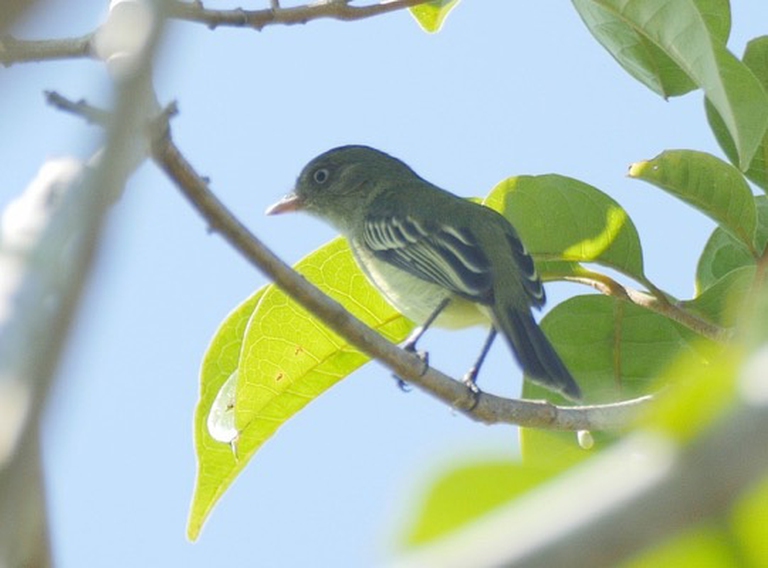
The Amazon became an alternative classroom during the pandemic. Now, the educational forest in Batraja, Bolivia, lives on to teach children and adults the value of nature.
Delfini, uccelli, mammiferi: sono 381 le nuove specie animali e vegetali scoperte in Amazzonia tra 2014 e 2015. La gallery
From the pink river dolphin to the fire-tailed titi monkey. 381 new species have been discovered in the delicate ecosystem of the Amazon forest between 2014 and 2015, one every two day, according a new report titled New species of vertebrates and plants in the Amazon 2014-2015 conducted by WWF and the Institute for Sustainable Development.
The study was presented in Sao Paolo and it came right after the news that the Temer decree was suspended. The decree would have threatened the Reserva Nacional de Cobre e Associadas (RENCA), opening it to mining explorations.
The discoveries of new species are on the rise. Between 1999 and 2009 “only” 111 species have been discovered every year (one every 3 days), and between 2010 and 2013 441 new species were found out (one every 3.3 days). The increase registered between 2014 and 2015 not only confirms the incredible biodiversity of the Amazon forest, it shows our little knowledge of it.
381 new species discovered in the Amazon – New report reveals that, between 2014-2015, a new plant or animal sp… https://t.co/Kf1IM1WFf5
— WWF (@WWF) 31 agosto 2017
Among the newly discovered species are:
The Araguaian river dolphin, also known as the pink river dolphin, has an estimated population of 1,000 individuals and is threatened by the construction of hydroelectric dams.
The Milton’s titi monkey is also known as the fire-tailed titi monkey, named after its orange tail. It is threatened by deforestation.
Chico’s tyrannulet is a bird named after environmentalist Chico Mendes, who played a crucial role in denouncing abuse and destruction in the Amazon.
This bird is named after United States former president Barack Obama
According to WWF the report should help to put pressure on decision makers and companies as it particularly focuses on the effects that the construction of new roads, dams and mines could have on the area. The study also identifies the main biodiversity hotspots.
Ricardo Mello, coordinator of WWF-Brazil Amazon Programme, reminded that “This biodiversity needs to be known and protected. Studies indicate that the greatest economic potential of a region such as the Amazon is the inclusion of biodiversity in the technological solutions of a new development model”.
Siamo anche su WhatsApp. Segui il canale ufficiale LifeGate per restare aggiornata, aggiornato sulle ultime notizie e sulle nostre attività.
![]()
Quest'opera è distribuita con Licenza Creative Commons Attribuzione - Non commerciale - Non opere derivate 4.0 Internazionale.
The Amazon became an alternative classroom during the pandemic. Now, the educational forest in Batraja, Bolivia, lives on to teach children and adults the value of nature.
Our species took its first steps in a world covered in trees. Today, forests offer us sustenance, shelter, and clean the air that we breathe.
Bangladesh suffered widespread damage as a result of Cyclone Amphan. Yet the Sundarbans mangrove forest acted as a natural barrier protecting the country from further destruction, as it has done countless times before.
On top of a 2.4 million dollar compensation, the indigenous Ashaninka people will receive an official apology from the companies who deforested their lands in the 1980s.
The tapir was reintroduced into Brazil’s Atlantic Forest, the country’s most at-risk ecosystem. The species can play a key role in the forest’s recovery.
Forests are home to 80 per cent of the world’s terrestrial biodiversity. This year’s International Day of Forests highlights the urgent changes needed to save them.
After a legal battle that lasted two years, Indonesia’s Supreme Court has revoked the permit to mine for coal in the forests of South Kalimantan in Borneo.
The list of human and animal victims of the Australia wildfires keeps growing – one species might already have gone extinct – as the smoke even reaches South America.
Areas where the FARC guerrilla used to hold power in Colombia have faced record deforestation. Farmers cut down trees, burn land and plant grass for cows. Because, “what else can we do for a living here in the Colombian Amazon”? An intimate report from the heart of the felled forest in Caquetá.








